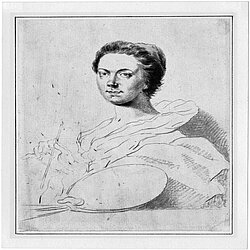Loading the page ...
Thomas Worlidge
(1700 Peterborough – 1766 Hammersmith)
The painter and etcher Thomas Worlidge received his initial artistic training from the Genoese master Alessandro Maria Grimaldi (1659–1732), who lived and worked in London and whose daughter Arabella became Worlidge’s wife. After a brief stay in Birmingham, where he worked as a glass painter, Worlidge returned to London in the mid-1730s to study under the engraver Louis Pierre Boitard. During a trip to Flanders and Holland in the company of Boitard the artist became acquainted with the work of Rembrandt, who from now on was to become his most important source of artistic inspiration. So closely did Worlidge seek to imitate Rembrandt’s style that contemporaries took quite a few of his paintings to be works by the Dutch master. From 1740 onwards the artist was mainly resident in Bath, where he made a name for himself by painting and drawing miniature portraits. Worlidge etched numerous works in Rembrandt’s manner, thus contributing largely to the latter’s revival in 18th century England.
Archive
